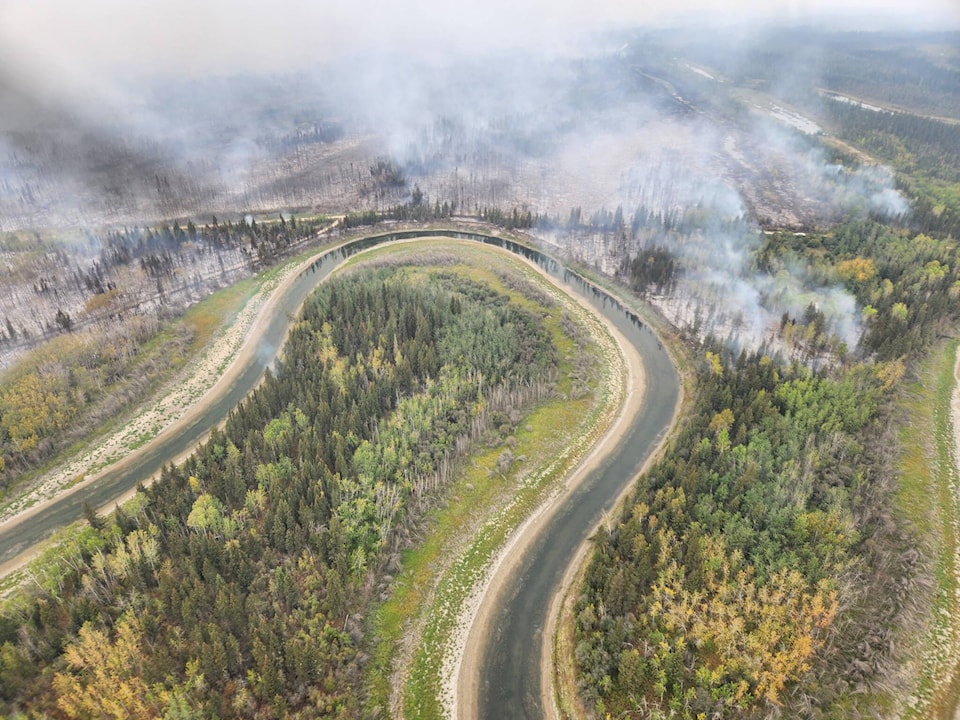The Town of Fort Smith is making careful preparations for the rapidly approaching wildfire season, according to senior administrative officer (SAO) Tracy Thomas.
“We will be prepared,” she said. “We’re making sure we have very fluid planning in place so we can pivot as needed and accommodate any changes [that occur].
“We’re doing everything within our power to ensure we’re ready for everything.”
Community staff recently completed an after-action review of the summer 2023 wildfire evacuation, and are “implementing the recommendations that were developed following that review,” said Thomas, which was among council’s top priorities for the year.
The town’s emergency management plan has also been updated and shared publicly through several channels, while residents are being encouraged to download and test the Alertable app, which is designed to keep users apprised of threats like wildfires. Community leaders also have plans for regular meetings with the Local Emergency Management Organization (LEMO) “to ensure that all partners are working together for preparation and prevention.”
In addition to these measures, the community has instituted a partial fire ban.
“The current partial fire ban is a preventive measure in reaction to the current conditions of very low precipitation and high fire risk conditions prevailing,” said Thomas. “Following the recent update by GNWT on the prolonged drought conditions, it was considered prudent to initiate a partial fire ban. We will continue to monitor the situation and adjust accordingly.”
Last summer’s wildfires forced residents of Fort Smith to evacuate for roughly five weeks. It was deemed safe for them to return home on Sept. 18, but after more than seven months — and a winter’s worth of snow — small “holdover fires” continue to burn in the region, thanks to a phenomenon called “overwinter action.”
However, the situation is currently under control, according to Mike Westwick, wildfire information officer with the GNWT’s Department of Environment and Climate Change.
“This isn’t new,” he said. “Ultimately, the message is that this is kind of overwintering activity is to be expected after a season where we saw a lot of [fire] activity.
“Often, this is happening in areas which have already burned through and there are limited forest fuel pathways to lead to challenges to people and property.”
While the holdover fires around Fort Smith are under control at present, the region is being closely monitored via infrared scanning missions, which can detect areas that are still smouldering, even if they are not visible to the naked eye.
“There were huge areas which burned last year — some near communities,” Westwick said. “There are infrared scanning missions underway to seek out any remaining hot areas and take appropriate action along the edges of these fires which were closest to communities and infrastructure.
“These scanning missions are going to give us the targets to use to take action as needed.”
Westwick said his department has also been monitoring overwinter activity “between Yellowknife and Behchoko, outside Fort Liard, along the route of the Mackenzie Valley Winter Road outside of Tulita,” and around the communities of Enterprise and Hay River.
Much like Fort Smith, Hay River has implemented a long list of measures to prepare for the threat of more fire, including the creation of new fire evacuation plans and efforts to improve communication with residents.
“A significant amount of fuel in the area was burnt during that wildfire [last year],” said Glenn Smith, the town’s SAO in reference to the expansive swaths of trees that were consumed last year. “We wouldn’t expect to see anything of the same magnitude without that fuel, but it is supposed to be dry. We’re still in drought conditions, and we expect that throughout the summer, so it’s important that people be diligent because fires can start anywhere.
“I think the public can see that there is a lot of work being done, which should calm some fear,” he added.
